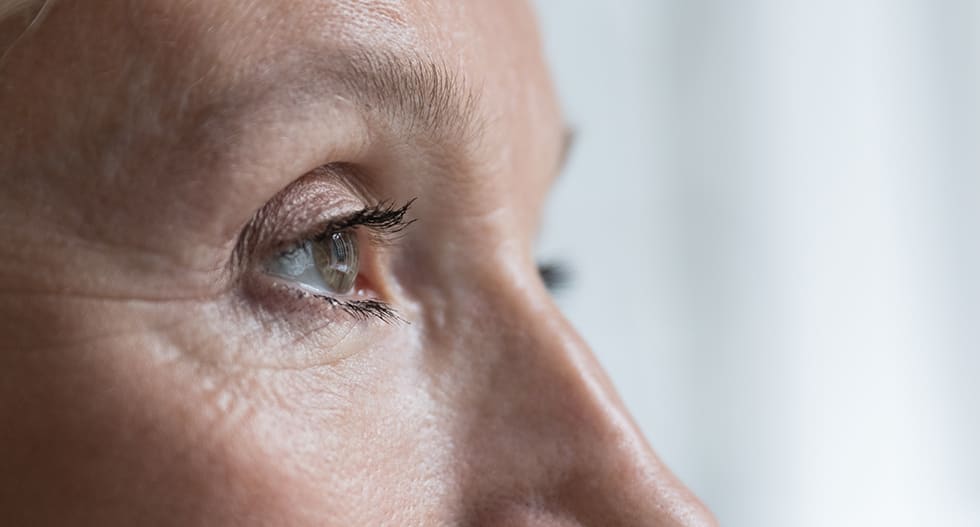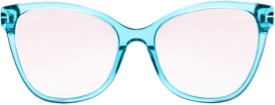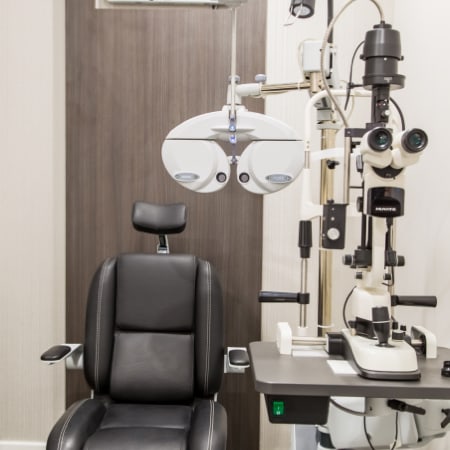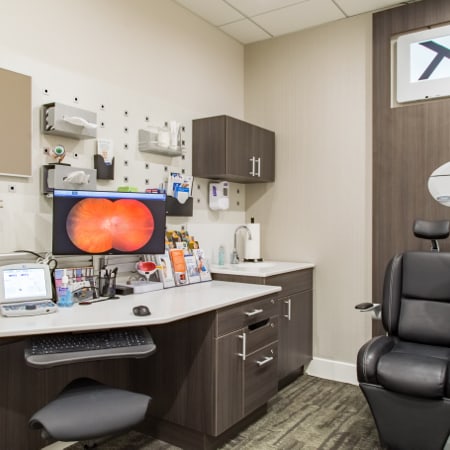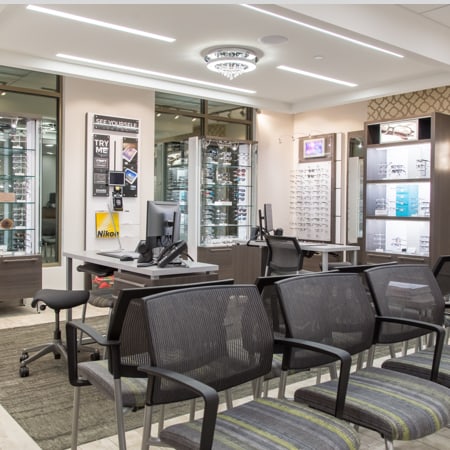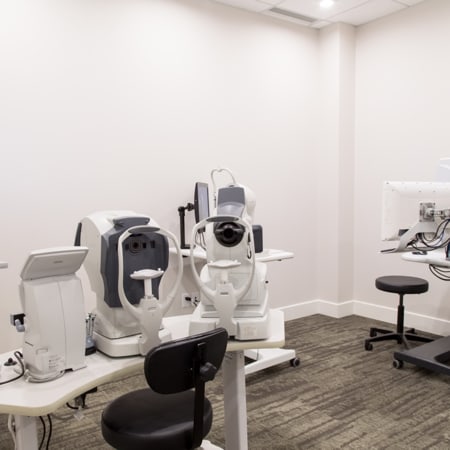Keeping an Eye on Your Vision Health
One of the main functions of a comprehensive eye exam is keeping an eye out for eye conditions or diseases a patient might have or be at risk for, which is why maintaining a regular eye exam schedule is so important.
At times, you could have an eye condition or disease and not have any symptoms. With our diagnostic technology, we’ll examine your eyes thoroughly and provide the necessary treatment options if you need them.
Visit us for an eye exam today and take a hold of your vision health.

Early Detection Means Early Treatment
The sooner we can examine your eyes, the sooner we can find the appropriate treatment options for your vision needs.
If you have an underlying eye condition, leaving it untreated can cause it to progress and cause vision damage and, in severe cases, total vision loss.
Protect your vision health by attending your regular eye exams and using the recommended treatment solutions for your diagnosis.


Our Diagnostic Technology
A proper diagnosis is important for the maintenance of your vision health. To get a diagnosis for our patients, we use modern diagnostic technology, tools, and tests to thoroughly examine all areas of the eye.
Each device is used to test a specific aspect of the eye, which could point to an underlying eye condition or disease.
Optical coherence tomography, or OCT, is a noninvasive imaging device that takes cross-sectional pictures of the retina. These cross-sectional images can assist in seeing the retinal layers and retinal thickness, which can help diagnose diseases or conditions in the retina, such as diabetic retinopathy or glaucoma.
OCT is similar to an ultrasound for the eye, except it uses light rays instead of sound waves.
Tonometry is a diagnostic test that measures the pressure inside the eye. This is an essential test when checking for glaucoma. There are two main types of tonometry: Goldmann applanation and non-contact.
Goldmann applanation tonometry is the most common test for measuring pressure inside the eye and involves placing a flat-tipped probe gently against the eye.
Non-contact tonometry is a test that involves a puff of air applied to your eye to flatten the cornea and measure pressure.
Retinal photography captures a comprehensive view of your eye in a single image, enabling the early detection and treatment of eye diseases with precision.
Taking an axial length measurement is an essential test in the process of myopia diagnosis and control. Axial length is determined through a combination of anterior chamber depth, lens thickness, and vitreous chamber depth measurements.
If the axial length measurement is outside of a normal range, then a myopia diagnosis can be made.
Eye Diseases & Conditions
When it comes to your eye, there are many diseases and conditions that could be occurring. Each disease or condition has its own set of symptoms and treatments, but a thorough exam is needed to properly diagnose and treat these conditions.
Age-related macular degeneration (AMD) is an eye disease that affects the retina’s macula, which controls central vision. If damage occurs to the macula, it can cause AMD and lead to blurry or wavy central vision.
There are two main forms of AMD:
- Wet AMD: Wet AMD is the less common form and typically occurs in the later stages of AMD. Wet AMAD is categorized by the growth of abnormal blood vessels in the back of the eye, causing macula damage.
- Dry AMD: Dry AMD is a more common type of AMD, and it is categorized by a thinning of the macula, which progresses over time.
Treatments for AMD depend on the type and stage but can include medications, injections, or laser treatments.
Cataracts occur when the lens of the eye becomes cloudy with age. Cataracts can cause blurry vision, the dulling of colours, sensitivity to light, double vision, and trouble seeing at nighttime.
The cloudiness of the lens occurs due to the clumping of proteins in the eyes as we age.
The only real treatment for cataracts is through routine cataract surgery.
Conjunctivitis is also known as “pink eye” and is an infection in the conjunctiva, which is the thin membrane on the inner surface of the eye. In conjunctivitis, the conjunctiva becomes swollen and inflamed, and redness occurs, giving it the name pink eye.
Depending on how the pink eye was contracted, treatments for pink eye include antibiotics, a warm compress, or an antihistamine.
Diabetic retinopathy is an eye disease that can occur in those with diabetes. It involves damage to the blood vessels in the retina due to increased sugar in the blood.
This damage can cause the leaking of fluid and leads to blurry vision, spots in vision, and vision loss in serious cases.
Treatments for diabetic retinopathy include laser treatments, injections, and surgery.
Flashes and floaters can appear in your field of vision as you age and are quite common. If these issues persist, however, they could be a sign of an eye condition.
Flashes refer to seeing flashes of light in the corners of your eyes. These flashes can have different sizes, colours, or even durations.
Floaters, or spots in your vision, occur due to small specks of protein in the eye as it is formed or the deterioration of eye fluid as we age.
Treatments for flashes or floaters can include medications in some cases or treatment of an underlying eye issue.
Glaucoma is a disease characterized by damage to the optic nerve, usually due to increased pressure in the eye. This pressure is due to a buildup of fluid in the eye.
The symptoms of glaucoma are typically blurry vision, eye pain, headache, or light halos, but glaucoma typically has no symptoms in the early stages.
Glaucoma treatments include medication and laser and non-laser surgery.
Take Care of Your Eye Health
Regular eye exams are an important part of detecting and managing eye disease. If you haven’t had a comprehensive eye exam recently, visit us today to get the health of your eyes examined.
